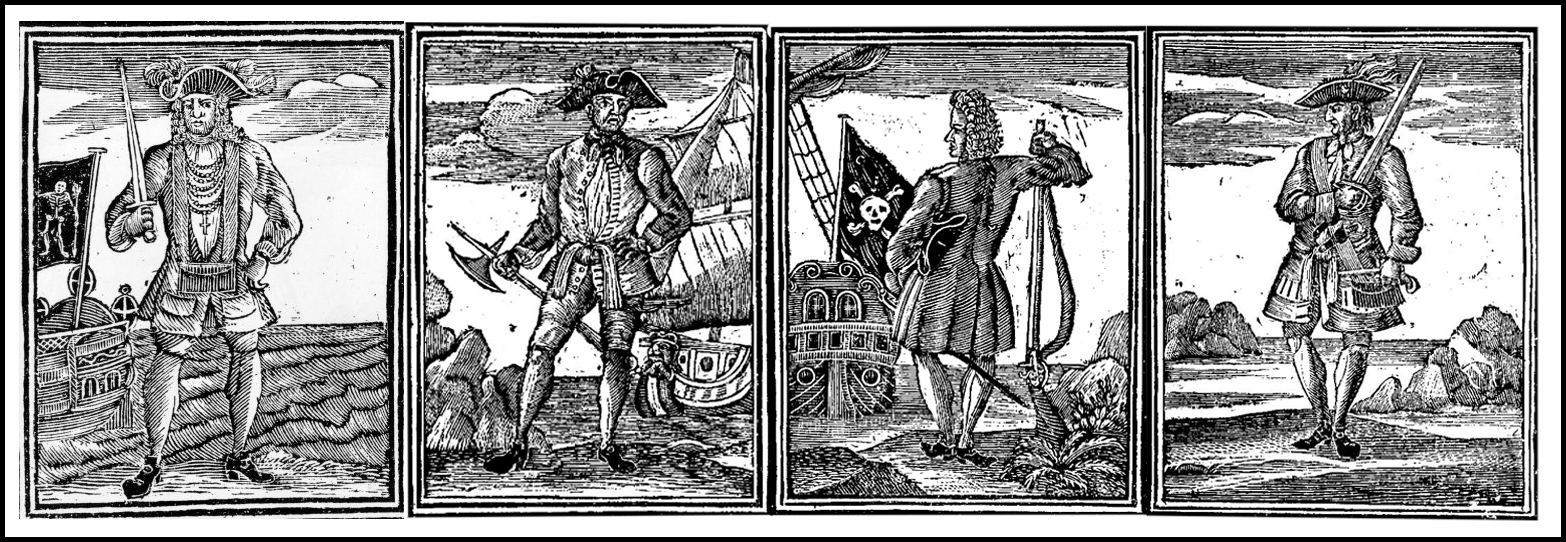When most people think of Barbary corsairs, they think of them as being Muslims from North Africa.
They were.
And they weren’t.
By the early part of the seventeenth century, the ranks of the Barbary corsairs had been swelled by Christian renegades, men who ‘turned Turk’ (converted to Islam) and became Barbary corsairs themselves, operating out of North African ports like Algiers, Tunis, and Salé.
So why did Europeans desert their homelands, convert, and attack European shipping?
There were, of course, many individual reasons, but there were also definite sequences of historical events that pushed men from European nations to become renegades. In the case of the English, they started out as legitimate privateers and then, due to circumstances beyond their control, slid by stages into outright piracy, until eventually a number of them ended up becoming renegade corsairs. To understand how this happened, we need to go back to the tail end of the sixteenth century.
During the last couple of decades of the sixteenth century and into the first few years of the seventeenth, the English and the Spanish were locked in a series of messy conflicts known as the Anglo-Spanish War. It lasted nearly twenty years—1585–1604—and involved a complex mix of political, religious, and economic factors. In 1566, the Protestant Dutch launched their bid for independence from the Catholic Spanish Habsburgs (a conflict known as the Eighty years’ War). The English moved to support them in 1585, precipitating the conflict with Spain. Upon the execution of Mary Queen of Scotts (a Catholic) in 1587, Philip II of Spain obtained Papal authorization to invade England and replace the Protestant Queen Elizabeth I with his own choice of Catholic monarch. It was to accomplish this that he launched the famous—and famously ill-fated—Spanish Armada in 1588. France was also involved in the war, and England, France, and the Netherlands forged an alliance against Spain in 1596.
The numerous battles—both land and sea—of the Anglo-Spanish conflict took place not only in and around Europe but also in the New World. Spain was the world power among European nations at the time. The Spanish colonies brought in huge wealth, much of it in the form of silver and gold. All that wealth had to be shipped across the Atlantic. The English did their best to intercept that shipping and to harass the Spanish colonies in the New World where it originated. Trying to accomplish this presented a problem, however. In the sixteenth and seventeenth centuries, European countries were not quite what we would today recognize as nation-states. Among other things, they lacked the extensive tax base and large standing armies and navies we mostly now take for granted. As a result, England had neither sufficient funds nor enough naval vessels to properly prosecute the war against Spanish shipping in the Atlantic and the Caribbean. To solve this problem, the English government employed privateers.
Privateers were a sort of pirate, but a very special sort. They were private individuals—as opposed to naval personnel directly employed by a government—equipped with legal authorization from their government to harass enemy shipping in a time of war. This authorization was typically known as a letter of marque. It specified what nationality of ships the privateer could attack and how the proceeds of the privateer expedition would be divided up. The benefit of privateers from the point of view of the English Crown was that they required no initial outlay—the cost of equipping a privateering expedition were born entirely by the backers of individual ships—but the profits were split between the private backers and the government. The use of privateers thus allowed the English government to increase the number of armed ships available for the conflict against Spain without having to incur the extra expense of permanently enlarging the navy. The English were not the only ones to do this. Swarms of Dutch, French, and Spanish privateers hunted both sides of the Atlantic, enriching themselves and their governments.
Over the two decades of the Anglo-Spanish war, English privateers hunted successfully throughout an enormous area, ranging from the English Channel down along the Atlantic coasts of Spain and Portugal to Morocco and the west coast of equatorial Africa, across to the northeastern coast of South America and the Spanish Main in the Caribbean, up to the Grand Banks of Newfoundland, and back across the North Atlantic. Over the years of hunting in this expanse of water, they gained a vast amount of experience, both as sailors and navigators, and as pirates and men of war.
But then the Anglo-Spanish War ended. Two new monarchs came to the throne: Philip III of Spain, in 1598, and James I of England, in 1603. Philip did not prosecute the war with the verve of his predecessor, and James saw himself as a peacemaker. In 1604, the warring powers signed a peace treaty, and the conflict was ended. As a consequence, the extensive English privateering network was officially disbanded. King James, in fact, issued a special proclamation (“A Proclamation to repress all Piracies and Depredations upon the Sea”) in September, 1603, six months after he succeeded to the throne, banning English piracy completely.
Many English privateers quietly returned to ordinary lives once again. A significant number, however, did not. There were multiple possible reasons for their choice.
Captain John Smith (of Jamestown and Pocahontas fame) discussed all this at some length in his The True Travels, Adventures and Observations of Captaine John Smith in Europe, Asia, Africke, and America, first published in 1629.
See the next post in this series—English Privateers – Part 2 —for Captain Smith’s observations.
 The Travels of Reverend Ólafur Egilsson
The Travels of Reverend Ólafur Egilsson
The story of the Barbary corsair raid on Iceland in 1627
Amazon listing